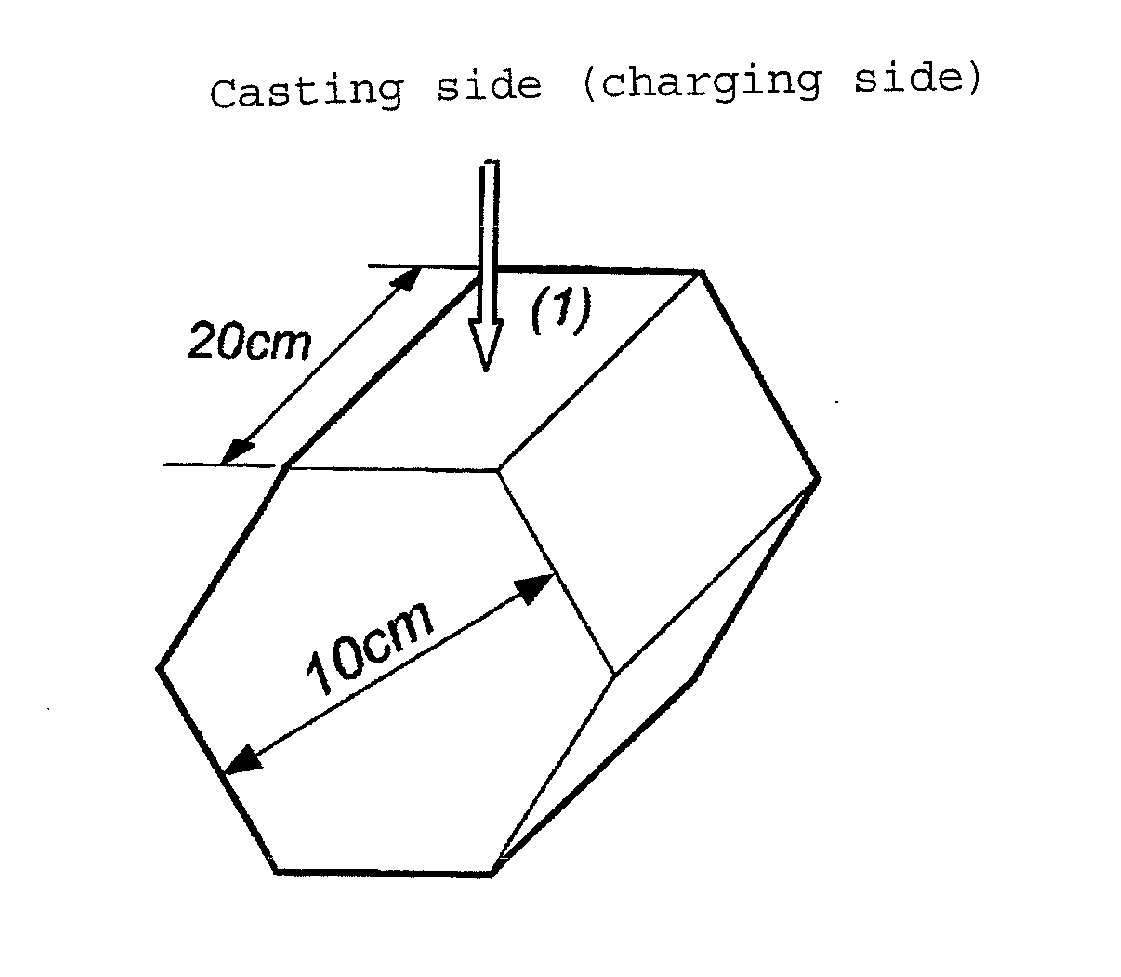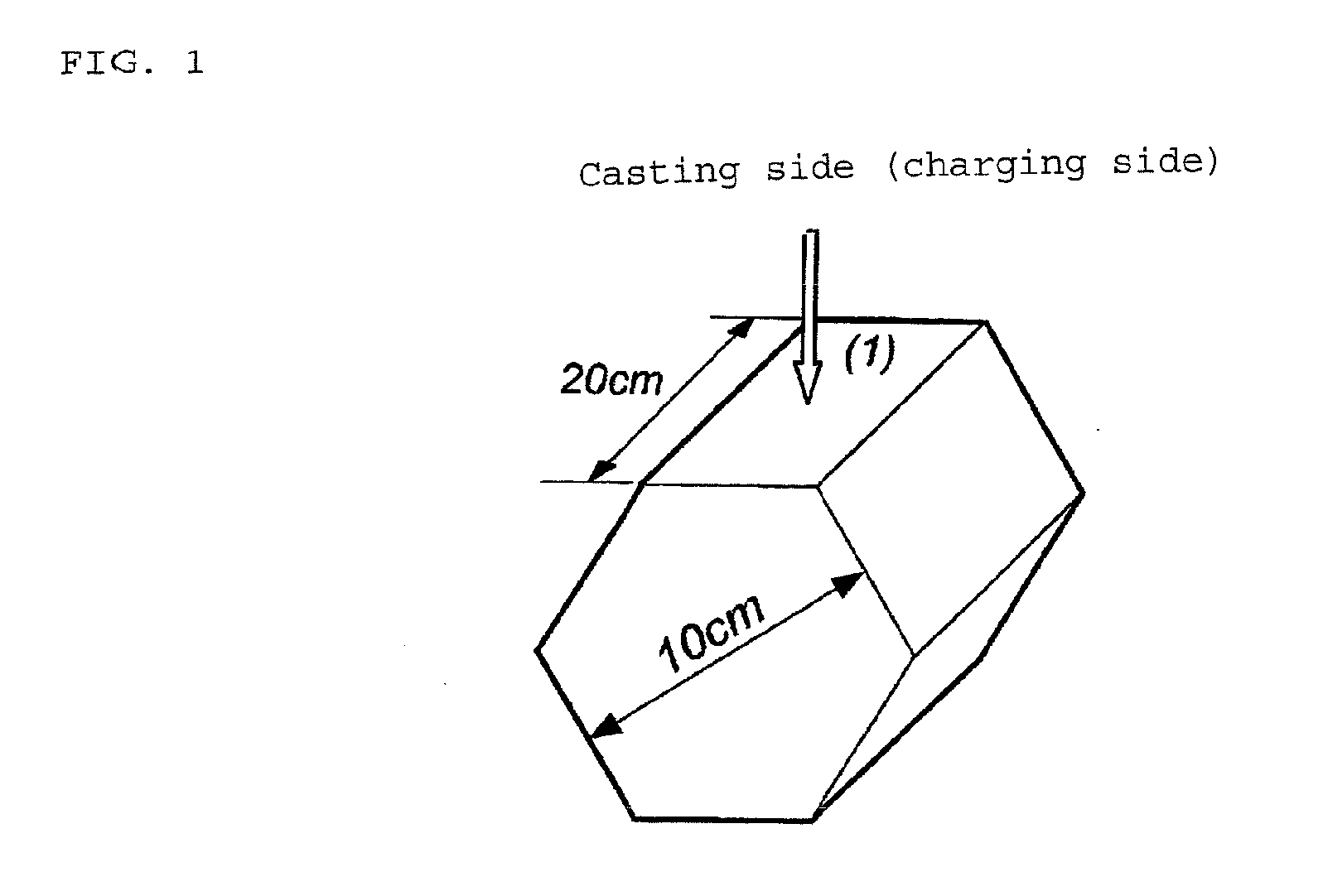Additive composition for hydraulic composition
a technology of hydraulic composition and additive composition, applied in the field of additive composition, can solve the problems of increasing manufacturing costs, requiring many hands and a lot of time,
- Summary
- Abstract
- Description
- Claims
- Application Information
AI Technical Summary
Benefits of technology
Problems solved by technology
Method used
Image
Examples
examples
[0094]The present invention is described in detail with reference to the Examples. The Examples are merely illustrative of the present invention and are not intended to limit the present invention.
(1) Component (A)
[0095]As the component (A), copolymers A-1 to A-6 obtained by Production Examples A-1 to A-6 below were used.
production example a-1
Production of Copolymer A-1
[0096]A glass reaction container (four-neck flask) equipped with a stirrer was charged with 114 g of water, the atmosphere in the reactor was substituted with nitrogen under stirring, and the temperature of the water was raised to 80° C. A solution in which 300 g of 60 weight-% aqueous ω-methoxypolyethylene glycol monomethacrylate (number of moles of ethylene oxide added on average: 120; ester purity: 100%), 11.5 g of methacrylic acid (reagent: Wako Pure Chemical Industries, Ltd.) and 0.98 g of mercaptopropionic acid had been mixed and dissolved, and a solution in which 1.9 g of ammonium persulfate had been dissolved in 45 g of water, were respectively added dropwise to the reaction container over 1.5 hours. Thereafter, the mixture was aged for 1 hour, and then a solution prepared by dissolving 0.8 g of ammonium persulfate in 15 g of water was added dropwise over 30 minutes to the mixture which was then aged for 1.5 hours. During a series of these reaction...
production example a-2
Production of Copolymer A-2
[0097]A glass reaction container (four-neck flask) equipped with a stirrer was charged with 333 g of water, the atmosphere in the reactor was substituted with nitrogen under stirring, and the temperature of the water was raised to 80° C. A solution prepared by mixing and dissolving 300 g of ω-methoxypolyethylene glycol monomethacrylate (number of moles of ethylene oxide added on average: 23; NK Ester M230G manufactured by Shin-Nakamura Chemical Co., Ltd.), 69.7 g of methacrylic acid (reagent: Wako Pure Chemical Industries, Ltd.) and 6.3 g of mercaptopropionic acid in 200 g of water, and a solution prepared by dissolving 12.3 g of ammonium persulfate in 45 g of water, were respectively added dropwise to the reaction container over 1.5 hours. Thereafter, the mixture was aged for 1 hour, and then a solution prepared by dissolving 4.9 g of ammonium persulfate in 15 g of water was added dropwise over 30 minutes to the mixture which was then aged for 1.5 hours. ...
PUM
| Property | Measurement | Unit |
|---|---|---|
| molar ratio | aaaaa | aaaaa |
| weight | aaaaa | aaaaa |
| weight ratio | aaaaa | aaaaa |
Abstract
Description
Claims
Application Information
 Login to View More
Login to View More - R&D
- Intellectual Property
- Life Sciences
- Materials
- Tech Scout
- Unparalleled Data Quality
- Higher Quality Content
- 60% Fewer Hallucinations
Browse by: Latest US Patents, China's latest patents, Technical Efficacy Thesaurus, Application Domain, Technology Topic, Popular Technical Reports.
© 2025 PatSnap. All rights reserved.Legal|Privacy policy|Modern Slavery Act Transparency Statement|Sitemap|About US| Contact US: help@patsnap.com



